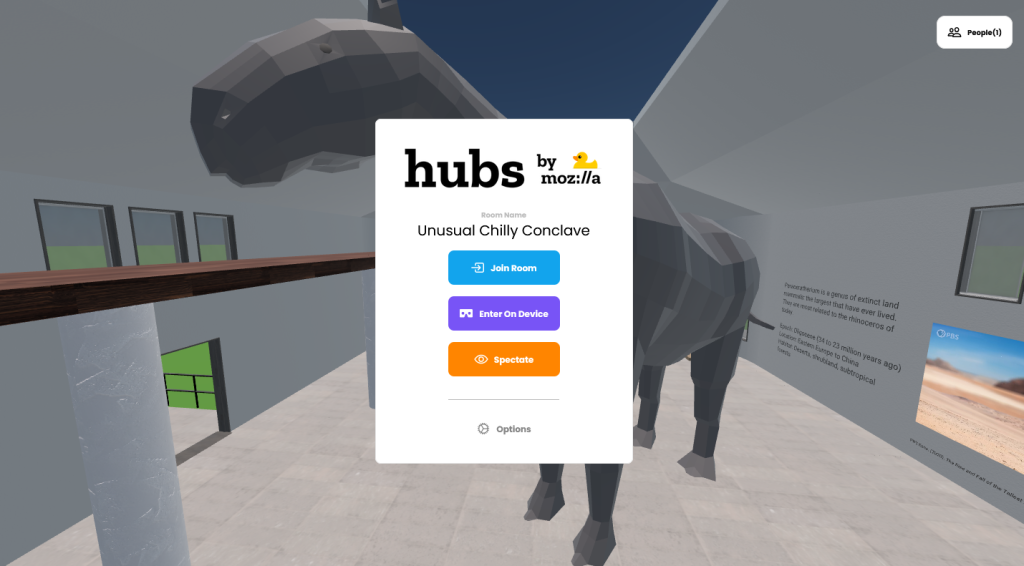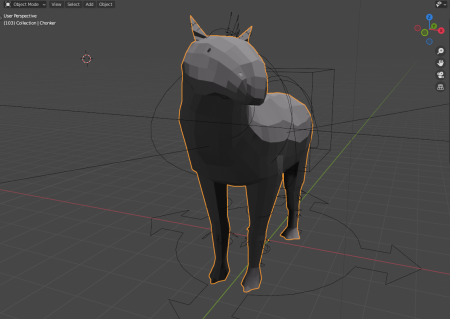
Hey, this isn’t directly AnVRopomotron related! If you want to go straight to Chonker Hall, go here.
I taught classes and held office hours online before the pandemic, but after the situation escalated and persisted I was even more focused on that platform. For a lot of online instructors, Zoom has been the default platform for office hours. A tweet by VR educator Kojiro Yano inspired me to make a virtual office (also even on campus I don’t have my own office). I chose Mozilla Hubs and Spoke due to its great community and tools. Hubs is based on A-Frame and has many features related to avatars and media. Spoke has an Architecture Kit that allows the building of polished looking structures. I had made two avatars before following their documentation and Youtube guides. Making a whole scene was a logical next step.
I figured this would be a weekend project to get something running.
What would my office look like if it was just limited by my imagination and computer skills? It would have interesting things to see that would spark more conversation and learning. As a little break from primates and to meet my own curiosity, I wanted to model a Paraceratherium for the center of the room. The Paraceratherium is the genus of extinct super-large mammals. It was also recently in science news due to the discovery of more fossils. Since it is a four-legged mammal, I went back to the original low poly animals tutorial by Grant Abbitt to get a refresher on how to model that form. After many months and many viewings, the video still had a lot to help me. I made a low-poly model with references based on scientific papers and a scan of what paleoartists have done.
A feature that I could use in Mozilla Hubs that I could not do in my own A-Frame site is animation. In AnVRopomotron, the number of models present meant that any movement would need lighting calculations that would bring down a lot of devices. My solution there was to have lighting effects simulated and baked (painted) on the textures of the models. Any movement would ruin the illusion so the models are not animated. In my Hubs scene, the Paraceratherium will literally have the only spotlight and thus animation and dynamic lighting would be possible. Problem: I’ve only done the most basic animation work in Blender and not all of it was successful.
The weekend was already over.
I watched a lot Blender animation tutorials and worked my way through the animation system in Blender. Since I was inexperienced and really didn’t want the project to last forever, my goal was to simulate the movement of a real life prehistoric animal robot like those that toured zoos when I was little. The motion can be repetitive and jerky instead of subtle and lifelike. I liked the result and it was something that friends and family mentioned added a lot to the model and the whole scene. The Paraceratherium looks at the second floor balcony to the left, dips down and sniffs or munches something at ground level (my favorite part), then looks a back up to the second floor to its right before repeating. As its doing that, the ears twist and the tail flicks back and forth at their own pace.
The first week was over but there were still things to fix.
Animating the Paraceratherium was very educational and well worth the time. Months later, Chonker Hall got a glowing writeup by the Mozilla Hubs Team itself! See how Chonker Hall turned out here. Head here for the writeup and more great educational Hubs.
